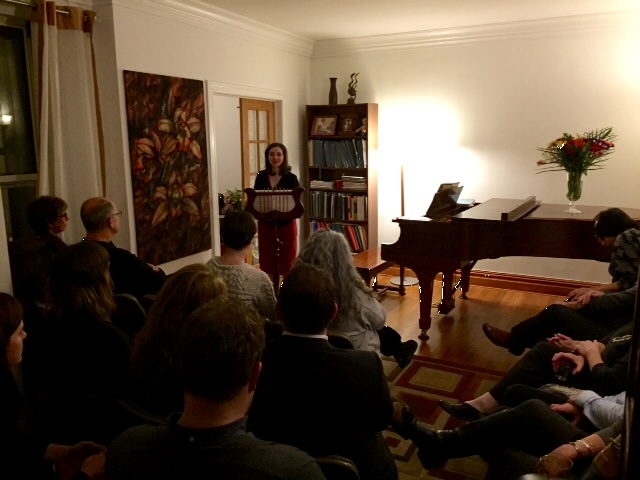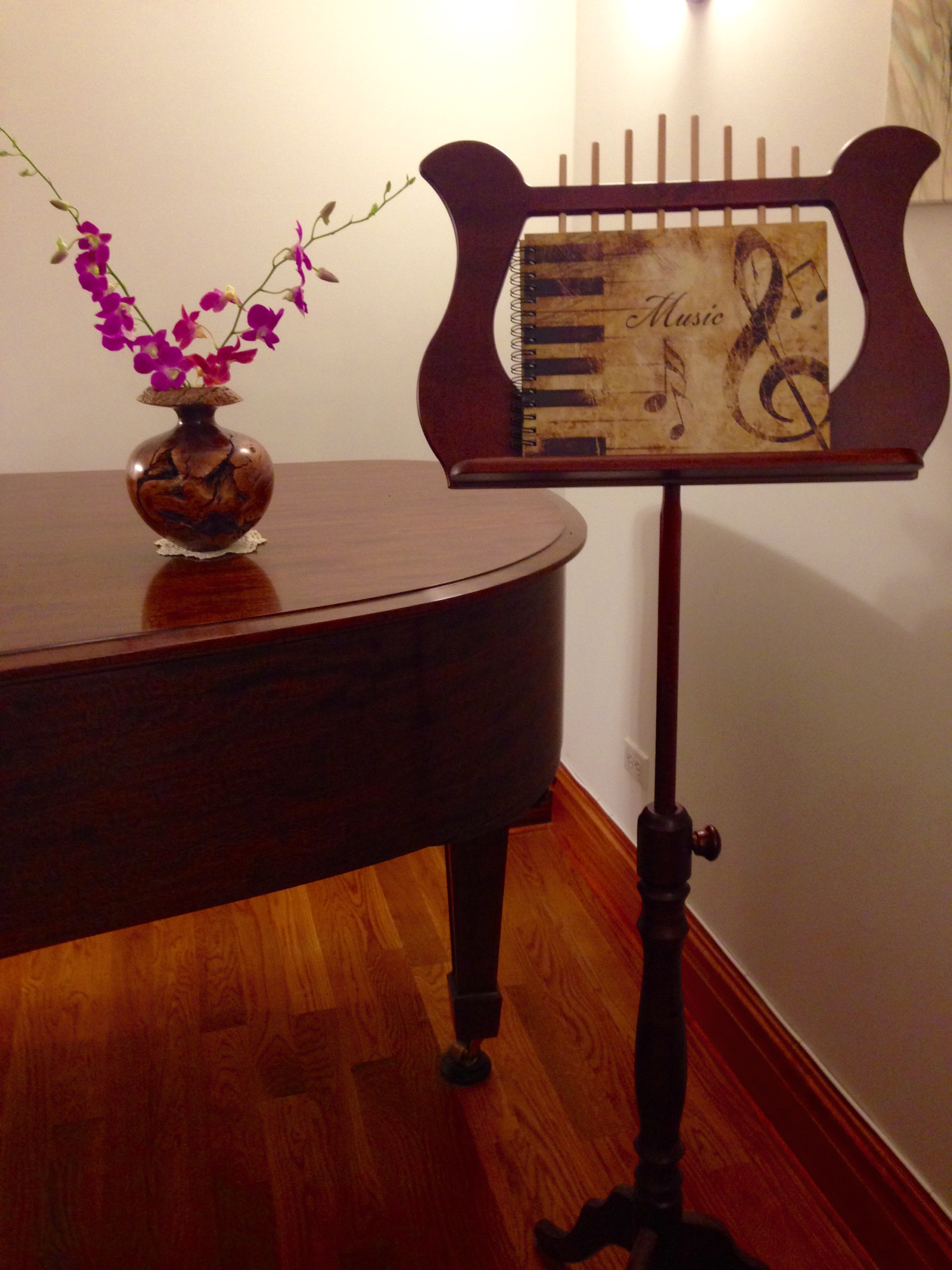Hommage to J. S. Bach
If there was ever a composer who exerted a profound and widespread influence on the later composers, it was Johann Sebastian Bach (1685-1750). This Bach-inspired program, which opens with his seldom-heard Sonata no. 3 for viola de gamba and keyboard (in the arrangement for cello and piano), will showcase cello-piano works by Beethoven, Webern, and Brahms, all of which demonstrate the influence of Bach’s towering genius in the craft of counterpoint, motivic concentration, and fugal writing.
While rarely performed, Bach’s three viola de gamba sonatas form an essential part of the repertoire for cello and piano – the most closely related scoring. They were not intended to form a unified cycle but rather were composed as separate works, all three originally conceived for other combinations of instruments. To this day, it remains largely a mystery for whom or for what occasion these sonatas were written. Composed ca. 1720, Sonata no. 3 in G minor for viola de gamba and keyboard, BWV 1029 is perhaps the most difficult and orchestral-sounding of the three sonatas. The first movement, Vivace, is written in a brilliant concerto-like style (stile concertante), reminiscent of Bach’s six Brandenburg Concertos. It is cast in Baroque ritornello form, which Bach adopted from Vivaldi’s earlier Italian concerti, featuring an ongoing alternation between the extraverted tutti sections and the more delicate, lyrical, and often virtuosic solo passages. The slow inner movement is a sensual Adagio in B-flat Major, cast in binary form, with each of its two sections embellished upon repeat. The dramatic pathos of the opening, G-minor tonality returns in the Allegro – a vigorous fugal finale, spun out from a relentless, repeating-note subject heard in canonic imitation between the two players, interspersed with poignant cantabile episodes – concluding on an impassioned note.
During his lifetime, Beethoven composed five sonatas for cello and piano, which form the first towering contribution for this duo genre. Of the five sonatas, Beethoven’s final Sonata in D Major for Cello and Piano, op. 102, no. 2, composed in 1815, is perhaps the most complex and ‘Bachian’ in both its intent and construction, as well as a superb example of his Late Style: a style characterized by highly evolved, experimental, paradoxical, and Baroque-inspired approach to composition, with a tone of sublime transcendence. Opus 102, no. 2 certainly inhabits this experimental and elusive Late Style approach, featuring many melodic and harmonic detours and surprises, paving the way for the crowning fugal finale – one of Beethoven’s sublime, Bach-inspired endings, which later occurs in his ‘Hammerklavier’ Piano Sonata, op. 106, and the Grosse Fuge, op. 133. From the very opening of the movement – the fiery Allegro con brio – the listener is confronted with concise thematic and motivic gestures that become disrupted with melodic and harmonic discontinuities. This volatile and rejoicing narrative of the first movement is counterbalanced by the lengthy, hymnlike, and dignified slow movement, Adagio con molto sentimento d’affetto, recast in the parallel key of D-minor, full of utmost grief and pathos that is briefly lifted in the more serene and hopeful D-Major middle section. The even more tragic-sounding reprise of the haunting Adagio music leads attacca into the Allegro fugato finale, full of bizarre dissonance even in its seemingly simple and cheerful tonality of D-Major, which must have completely baffled Beethoven’s audiences and still shocks the listener’s ear to this day. Despite its thorny Bachian counterpoint and many odd stumbling blocks, as in the case of a sudden unexpected detour to a remote F-sharp-Major halfway through the finale, this quirky fugue ultimately concludes the sonata and Beethoven’s entire cello-piano oeuvre on a fitting note of triumphant affirmation and transcendence.
Like J. S. Bach, Anton Webern was a master of meticulous craftsmanship of motives. Composed in 1914, Webern’s Three Little Pieces for cello and piano, op. 11 are considered among his best known avant garde miniatures, which test the boundaries of musical time. Their extreme brevity is remarkable: the melodic ‘cells’ or ideas are distilled into groups of just two or three notes, and phrases are strikingly concise, revealing Webern’s gift for aphorism. Moreover, these pieces are also important precursors to the twelve-tone method – pioneered by Webern’s teacher and mentor, Arnold Schoenberg – already using complete statements of the twelve notes of the chromatic scale as a musical scaffold for composition. The first piece, Mässige, (slow) is subdued and mysterious in character, with hushed gestures (ppp) exchanged between the two players in high and low registers, while the fleeting and manic second piece, Sehr bewegt (very agitated) is full of Expressionist angst. The third and final piece, Äusserst ruhig, (extremely calm) is the most compact, comprised of just ten measures of music. It returns to the hushed ppp dynamic, in the stark, low register for both players, vanishing nearly to a whisper at the end.
Perhaps even more than Beethoven, Johannes Brahms maintained a lifelong fascination with the music of the past and especially with the music of J. S. Bach, having once famously proclaimed: “Study Bach. There you will find everything.” In 1862, Brahms moved from his native Hamburg to Vienna and that same year he began composing his Sonata no. 1 in E minor for cello and piano, op. 38, which would become his first essay in the intimate duo genre and a great homage to Bach. Initially, he composed just the first two movements, followed by a slow Adagio movement. However, when Brahms came back to complete the Sonata in 1865, he decided to eliminate the Adagio, whereby the graceful and archaic Menuet movement would fulfill the function of both the slow movement and the scherzo, culminating with a tour de force fugal finale. The cello-piano Sonata no. 1 in E Minor exemplifies Brahms’ deep admiration of the music of Bach in that the principal theme of both the first movement and of the fugal finale are based on Contrapunctus 4 and 13 of Bach’s Art of Fugue. The Sonata, cast in the melancholy key of E-minor, begins with a somber, melodious Andante non troppo, in which the impassioned dialogue between the two players unfolds with tense urgency in Classical sonata form. The second, lightly textured movement is a wistful and graceful Scherzo-Trio, whose title – Allegretto quasi Menuetto – harks back to the aristocratic French Baroque dance. Its more impassioned espressivo middle section (Trio), is full of surging phrases played in a doleful duet by both players. The third and final movement, Allegro, is a powerful tour de force fugal finale, whose octave-defined opening theme is derived from Contrapunctus 13 of Bach’s The Art of Fugue. Throughout the finale, Brahms exploits a series of learned Baroque fugal devices, such as imitation, inversion of the subject, overlapping the subject upon another subject (stretto), along with his favorite rhythmic clash of the subject’s triplets heard against the countersubject in regular eighth notes, such as can be witnessed in the more relaxed Tranquillo middle section. As the momentum builds in the reprise of the opening fugue subject, the finale works its way into a state of frenzy in the vigorous Piu Presto coda, which begins with a tense piano and gradually escalates to an explosive fortissimo climax at the conclusion of this riveting and dramatic work.
– Program Notes by Dr. Yelena Grinberg





